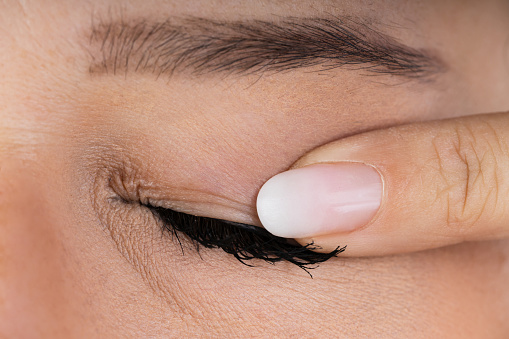Omega-3 Fatty Acids and Meibomian Gland Disease
There is a wide range of treatment options for Meibomian gland disease. In this article, we’ll discuss the pathophysiology of the disease, comorbidities, and treatment options. We’ll also talk about the role of Omega-3 fatty acids and other alternative therapies.
Pathophysiology
The pathophysiology of meibomian-gland disease (MGD) is multifactorial and varies from person to person. In addition to the glandular disorder itself, meibomian glands can be involved in various conditions, including congenital defects of the glands, abnormal blinking, aqueous deficiency, and cicatricial diseases. Meibomian-gland disorders may also be associated with a decrease in the production of eye oil.
Several research studies have been conducted on meibomian gland disease. These studies include those by Knop AJ, Carvounis P, Knox-Cartwright N, Tiffany JM, and Ousler KW. They looked at the pathophysiology of meibomian gland disease and the role of the interprofessional team in the management of patients.
The meibomian glands are essential components of the tear film and help maintain the ocular surface. They secrete lipids that lower the surface tension of the tear film and help it to stabilize. This lipid layer also helps protect the aqueous layer by providing an outer barrier against bacteria. However, meibomian gland dysfunction can be caused by hormonal imbalances, autoimmune diseases, or other external mechanical factors.
Dry eye is a common manifestation of meibomian gland disease. It is a common clinical problem that is often misdiagnosed or undertreated. If left untreated, meibomian gland disease can lead to evaporative dry eye disease and permanent gland atrophy. It may also cause scarring of the posterior lid margin and chronic inflammation.
Several diagnostic tests are available for the diagnosis of MGD. The most comprehensive method is called the meibograde method. It uses a three-point scoring system for evaluating meibomian gland function. It identifies several characteristic features of the meibomian glands, including morphology and size. A physician can then plan a step-by-step clinical approach based on the results.
Researchers have looked at the effects of omega-3 dietary supplements on meibomian gland disease. In one study, researchers found that omega-3 dietary supplements improved the symptoms of meibomian gland dysfunction and blepharitis. The study was published in the Trans Am Ophthalmol Soc journal 106:336-56.
Comorbidities
In addition to the diagnosis of meibomian gland disease, patients may experience comorbidities, including glaucoma and other diseases. These can be managed through medication. A patient with obstructive MGD may benefit from vectored thermal pulsation therapy. However, repeat treatments may be necessary. The patient may also need to change their medication regimen to a preservative-free product.
Other comorbidities of meibomian disorders include autoimmune diseases and diabetes. A person with autoimmune diseases or dry eye is more likely to develop meibomian disease. Patients with diabetes are also more likely to develop thyroid disease. However, many patients with meibomian dysfunction have no underlying autoimmune conditions.
A new book, Your Dry Eye Mystery Solved, explains the cause and treatment of Meibomian gland disease. The book explains the latest breakthrough in treatment, dispels common myths and provides step-by-step instructions. It also describes how this condition can affect a person’s vision.
Treatment
There are several methods for treatment of meibomian gland disease, including injections, intraductal meibomian gland probing, and intense pulsed light therapy. Intranasal neurostimulation is also an option for treatment of meibomian gland disorders.
The disease is characterized by an abnormal layer of lipids in the tear film. It is the leading cause of evaporative dry eye. It is more common in Asian populations, although other systemic and ocular factors may also contribute to the development of the disorder. To improve symptoms, patients should consult a doctor.
Meibomian gland disease is a common ophthalmology diagnosis, and several treatments are available. Traditional treatments include lid hygiene and warm compresses, while newer therapies have shown promise in improving patients’ quality of life. The most effective treatments for meibomian gland disease are customized for the patient’s individual needs.
Treatment of meibomian gland disease involves identifying the cause of meibomian gland dysfunction and restoring the function of the glands. While the disease is progressive, it can be reversible with the appropriate treatment. Symptoms of meibomian gland disease may include eye irritation, ocular surface inflammation, and visual dysfunction.
The use of an IPL treatment to treat meibomian gland disease can be highly effective. Several studies have confirmed that the treatment of meibomian gland disease is effective. It may help patients with dry eye. Another option is a combination of oral medications. Patients who are allergic to these medications should consult a doctor to prevent complications.
Meibomian gland disease (MGD) is the leading cause of evaporative dry eye. It can affect up to two-thirds of the 34 million dry eye patients in the U.S. This condition can be very hard to treat. In the long run, patients may suffer permanent changes to the tear film and even progressive loss of their glands.
Omega-3 fatty acids
Studies have shown that omega-3 fatty acids are effective in alleviating the symptoms of meibomian gland dysfunction. These compounds improve tear film stability and secretion. According to Dr. Jain, a medical doctor from Chandigarh, India, these fatty acids may also be effective in the prevention of dry eye syndrome. To test this theory, he and his colleagues enrolled 60 people with moderate meibomian gland dysfunction. In this group, 30 patients took two capsules twice a day. These supplements contained 1.2 g of eicosapentaenoic acid and 480 mg of docosahexaenoic acid.
The study participants were ages 18 to 85 and suffered from the symptoms of meibomian gland dysfunction. These patients were evaluated using criteria set out at the 2011 International Workshop on Meibomian Gland Disease. The patients were given either a placebo or the study supplement, Brudysec(r) 1.5 g, which was prepared by Brudy Laboratories, a pharmaceutical company located in Barcelona, Spain. The study participants completed a 36-item Short Form Health Survey questionnaire, which was administered in Spanish.
Omega-3 fatty acids have the ability to inhibit the inflammatory chain. Like telephone lines strung from pole to pole, the inflammatory chain needs to send a signal from the eye to the rest of the body. By blocking this communication, Omega-3s can prevent or alleviate inflammation and make other treatments more effective.
Meibomian gland dysfunction is a common cause of dry eye disease. In fact, it is estimated that it may be the leading cause of dry eye in the world. The underlying mechanisms are largely related to increased meibum viscosity. Meibum, the lipid layer covering the eyelid, forms an important barrier to evaporation. When this barrier fails to function properly, it causes evaporative dry eye.
Studies showing efficacy in treating meibomian gland disease include a double-masked, randomized placebo-controlled multicenter trial conducted by Dr. Donnenfeld and colleagues. In this study, patients with meibomian gland disease were treated with a natural triglyceride omega-3 formulation. A total of 105 patients were evaluated. Seventy percent were female, with an average age of 56.8 years. The active treatment group had an improvement in tear osmolarity and MMP-9 levels.



